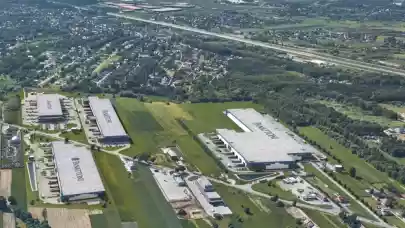
In Romania, the peak of the real estate cycle is often delayed compared to other countries in the region and market dynamics don’t allow for a true warm up. Ana Dumitrache, Head of Investment Properties at CBRE Romania shared her expectations for the market.
Ana Dumitrache will join the Romanian investment roundtable at the upcoming SEE Property Forum 2018 in Bucharest.
In 2017 €1 billion worth of assets were transacted on the Romanian property market. What are the main drivers behind last year’s strong figures?
The products are more diverse and high quality so subsequently the investors are looking to the Romanian market. Also, the sources of capital have diversified within the last couple of years. And I would mention that I have directly noticed the banks being more active in financing – which is a vote of trust all the time for the market and especially for newcomers.
Do you expect last year’s dynamic to continue throughout 2018?
I like to think it will be even better as there are some very interesting market opportunities either in the sales process or in off-market transactions. Secondary cities are on the list of the investors and there is plenty of activity there also and it is reasonable to believe there will be assets transacted in areas different than Bucharest.
What are the main risks to the outlook?
It is always the dependence of Romania on the outside factors and macroeconomic movements which have nothing to do with the intrinsic value of the assets and sometimes not even with the fundamentals of the country. What bothers is also a certain inertia when comparing with other CEE capitals, the peak interval of the cycle comes in delay and is shorter and it actually does not let the market warm up, landlords to become interested to sell for a sensible upside, etc.
What do you think needs to change for Romania to attract more interest from large international players?
If we talk about real estate I would say one word: infrastructure. Infrastructure opens new areas for development within the city limits or in the country at large. Imagine how the logistic developments would flourish along a cross-country highway. Imagine how an underground line can open new sites for office or residential developments or even mixed-use developments. The more good products we have the more investors will be tempted to come over.
Do you expect new investors to enter Romania within the next 12 months? Where will new capital come from?
I expect new names, not necessarily new geographical sources of capital within the next 12 months. Somebody told me I came into the “investment world” too late as all the mandates are gone and there is nothing left for me to do. I honestly keep my fingers crossed for my colleagues to close the transactions which are advanced because that will give us more to work on. My ideal would be that there is room for everyone and that we don’t keep each other busy by fighting on the same deals.
Do you expect to see more investment activity in regional cities in 2018? Which cities and market segments can be the most attractive to investors?
I have already touched the subject. I am a big fan of second-tier cities with technical universities because I think that is exactly where the strong stable demand is coming for all sectors of real estate – office, residential, but also retail. A few years ago, while I was in the bank, a risk manager has told me he does not like financing office in Romania, especially in second-tier cities, because there is too much IT and the IT industry is cyclical. I thought about that since then and I have developed a different theory – IT is no longer cyclical, it became so much part of our lives as this profession/business is more like health and pharma. You cannot live without it. And I have also watched closely how the whole segment has evolved in Romania and I think we have great public schools, great technical universities and very smart computer loving millennials. I strongly believe in Timisoara, Cluj and Iasi for office and retail, while residential can also do well depending on the ability of the developers to understand the potential buyers’ needs.



